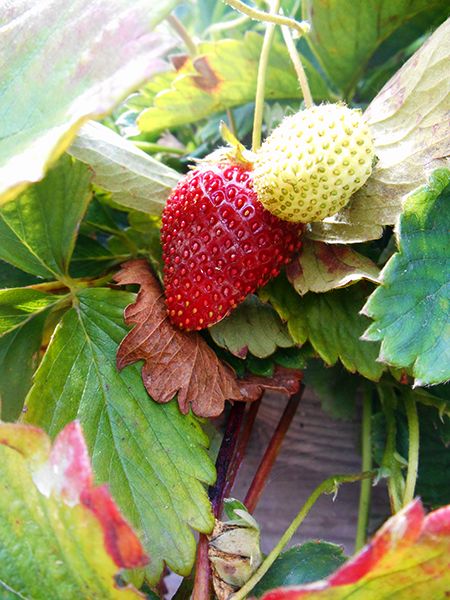These days, we are all familiar with the word, “organic,” but what exactly does it mean? This term can be confusing because, depending on the context, its definition can be quite different. In the context of growing food, here are a few definitions to help bring things into focus and clarify misconceptions.
Organic as a gardening method means to garden with materials derived directly from plants, animals, and minerals, without the assistance of fossil fuels (i.e., there is no use of petrochemical-based pesticides, herbicides, fertilizers). Organic gardening focuses on emulating and working with, not against, biological systems. In particular, it strives to maximize soil health by cultivating thriving ecosystems of plants and micro- and macro soil organisms, from bacteria and fungi to earthworms and butterflies. Because gardening products derived from petrochemicals damage or kill soil organisms, organic gardeners do not use them and instead use organic materials such as compost and compost teas.
Organic as a gardening material, as in “organic matter,” refers to materials that were previously alive and are now dead and decomposing, such as leaf and wood matter on a forest floor or compost. Organic matter is an important component of healthy soil, since it is rich with nutrients and improves soil’s structure and ability to hold water. This, in turn supports soil ecosystems and plant health.
Organic in the context of growing fruits and vegetables to sell is a United States Department of Agriculture (USDA) certification and set of standards for food production. The USDA web page characterizes these standards as follows: “Organic agriculture produces products using methods that preserve the environment and avoid most synthetic materials, such as pesticides and antibiotics. USDA organic standards describe how farmers grow crops and raise livestock and which materials they may use.” By contrast, “conventional” or “industrial” agriculture, which arose in the years following the World War II in tandem with surplus chemicals related to the war effort, uses petrochemical-based pesticides, herbicides, fertilizers, and other substances that have negative health and environmental impacts.
It is worthwhile to note that some small-scale growers who use sustainable growing practices and, such as organic, bio-intensive planting, and integrated pest management, opt not to apply for USDA organic certification because of the significant investment of funding and time required. At the SFC Farmers’ Markets, these farmers display a sign stating that they use “Sustainable” methods. Since definitions and labeling may sometimes need clarification, the best way to learn how your food is grown is to know (and ask) your farmer!

